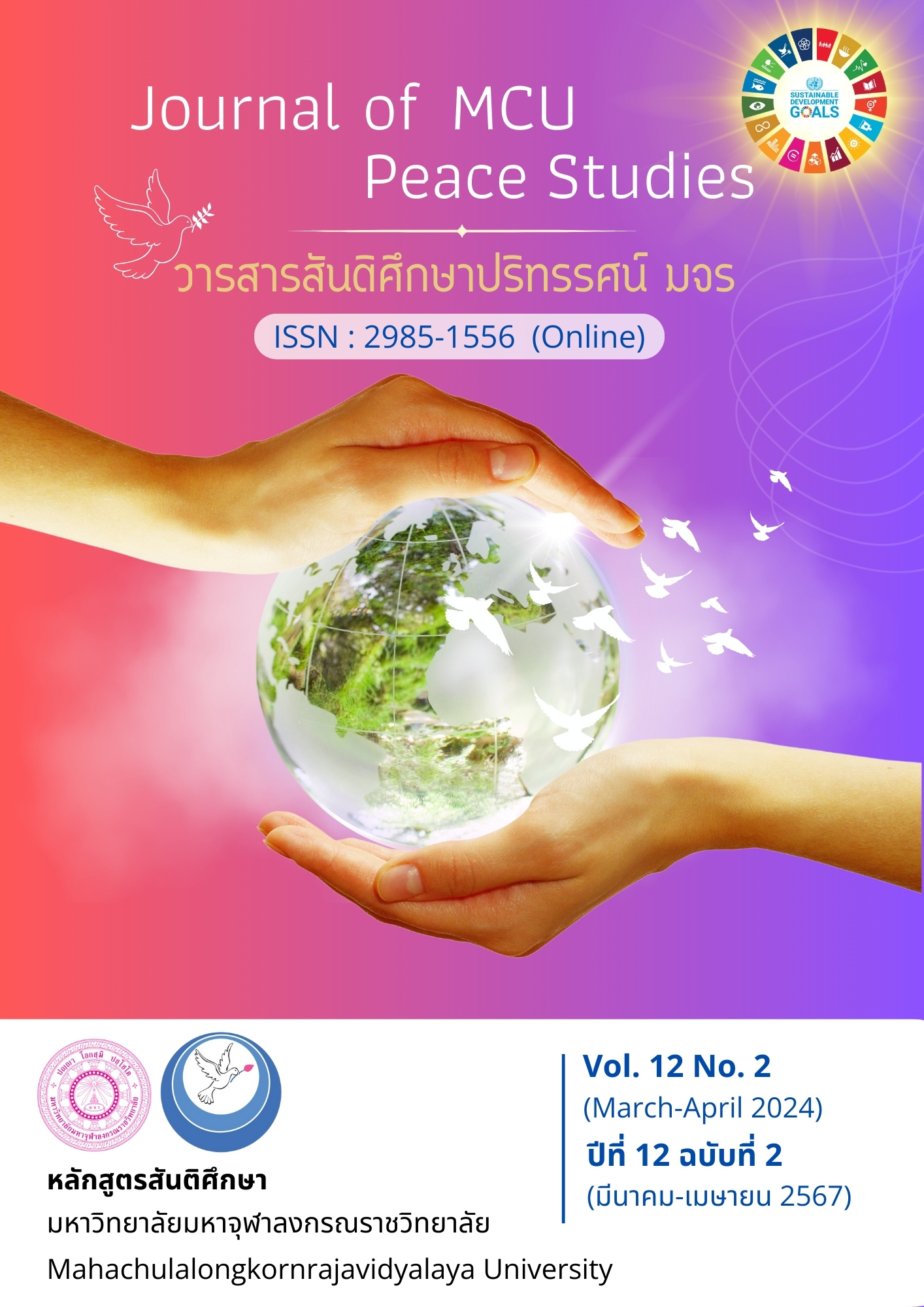Guidelines for Developing Operational Potential of Community Enterprise Groups, Mueang Sub-district, Mueang Loei District, Loei Province
Main Article Content
Abstract
From the study, the following results were found: 1) The current operation of community enterprise groups in Mueang Subdistrict, Mueang Loei District, Loei Province overall had the highest level of opinions. When each aspect was analyzed, it was discovered that the majority of respondents were female, between the ages of 41 and 50, married, with a lower secondary education, a general employee career, and a monthly salary of 10,001 to 15,000 baht; 2) The present condition of knowledge management for community enterprise groups in Mueang Subdistrict, Mueang Loei District, Loei Province overall had the highest level of opinions. When each aspect was analyzed, it was found that knowledge storage had the highest mean level, followed by knowledge transmission. The aspect with the lowest mean was knowledge formulation; and 3) From comparing the guidelines for developing the operational potential of community enterprise groups in Mueang Subdistrict, Mueang Loei District, Loei Province, it was discovered that the opinions on the guidelines differed with a statistical significance of 0.05.
Article Details

This work is licensed under a Creative Commons Attribution-NonCommercial-NoDerivatives 4.0 International License.
Views and opinions expressed in the articles published by The Journal of MCU Peace Studies, are of responsibility by such authors but not the editors and do not necessarily reflect those of the editors.
References
Butdee, S. (2012). The Development of a Causal Relationship Model between Selecting Factors, Organizational Commitment and Employee Performance in the Steel Pipe Industry Group Organization. King Mongkut's Journal of North Bangkok, 26(2), 289-298.
Chalothorn, J. (2011). Enhancement of Community Enterprise Efficiency to Create Local Strength in Bo Thong District, Chonburi Province: A Case Study of Ban Klong Mue Sai Agricultural Housewives Group. (Master’s Thesis). Business Administration Kasetsart University. Bangkok.
Chantawongsri, W. (2004). Factors Affecting the Success of Community Enterprise Groups, Kantharawichai District, Maha Sarakham Province. (Master's Thesis). Khon Kaen University. Khon Kaen.
Chimplee, K. (2012). Knowledge Management Model of Local Wisdom in Wicker Handicrafts: A Case Study of Community Enterprises. (Doctoral Dissertation). National Institute of Development Administration. Bangkok.
Community Organizations Development Institute. (2020). CODI History. Retrieved July 5, 2022, from https://web.codi.or.th
Department of Agricultural Extension. (2005). Community Enterprise.Retrieved July 5, 2022, from https://www.doae.go.th
Ngamlamom, W. (2015). Concepts and Theories Related to Demographic Characteristics 2016. Retrieved August 25, 2022, from http://learningofpublic.blogspot.com/2015/09/blogpost_11.html
Phongphit, S. (2005). Thinking from Master Plan to Community Enterprise. Bangkok: Charoenwit Phim.
Seritrakul, W. (2007). Model of e-Learning Adoption: Case Study in Bangkok University Undergraduate Students. (Research Reports). Bangkok: Bangkok University.
Srithong, N. (2015). The Process of Building a Strong Community That is Self-reliant and Sustainable. Bangkok: Odeon Store.
Taifahphlu, Th. (2015). Attitudes and Expectations towards Lifestyle and Brand Consumption of Consumers Aged 40 and over in Bangkok. Dhurakij Pundit Communication Arts Journal, 1(9), 117-151.
Thaveechan, S. (2008). Study on the Study of Ways to Increase the Efficiency for Development, Carrying Out Local Food Business, Case Study: Sausage Business, Community Enterprise, Farmers' Group Ban Phon Privatization, Suksawat Subdistrict Deputy, Phrai Bueng District Sisaket Province. (Research Report). Sisaket: Sisaket Rajabhat University.
Veerapat, W. (2009). Teachers' Knowledge and Awareness towards Students' Self-employment. (Master's Thesis). Chandrakasem Rajabhat University. Bangkok.
Wisawakul, N. (2017). Guidelines for Developing the Operational Potential of Community Enterprises. (Research Report). Chiang Mai: Chiang Mai University.

